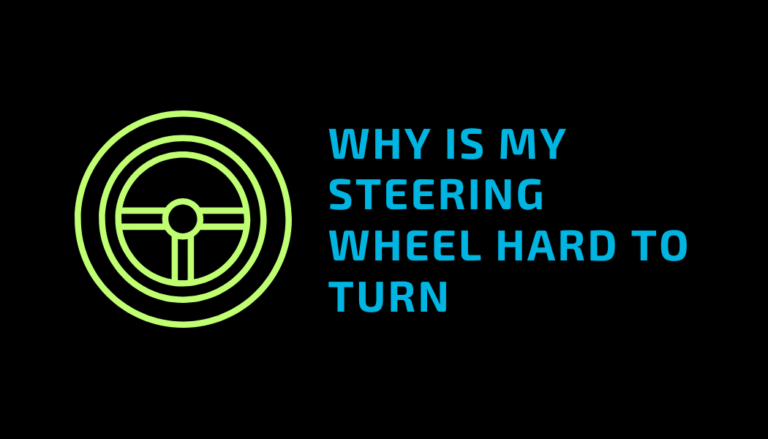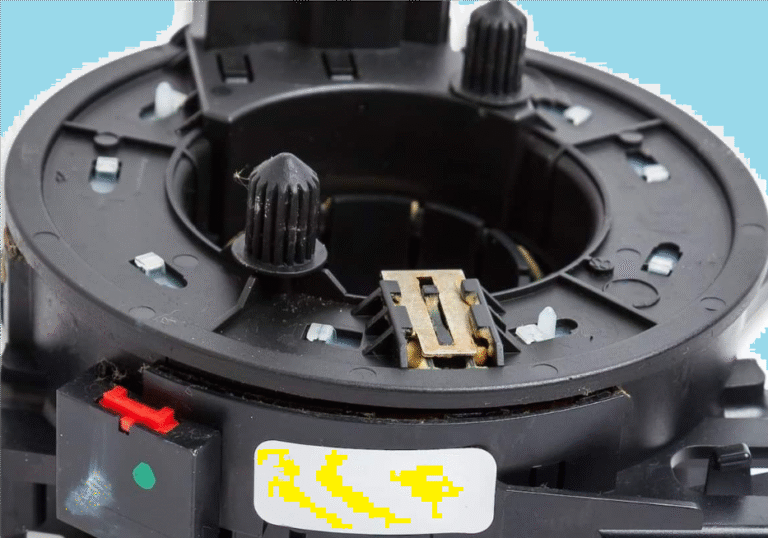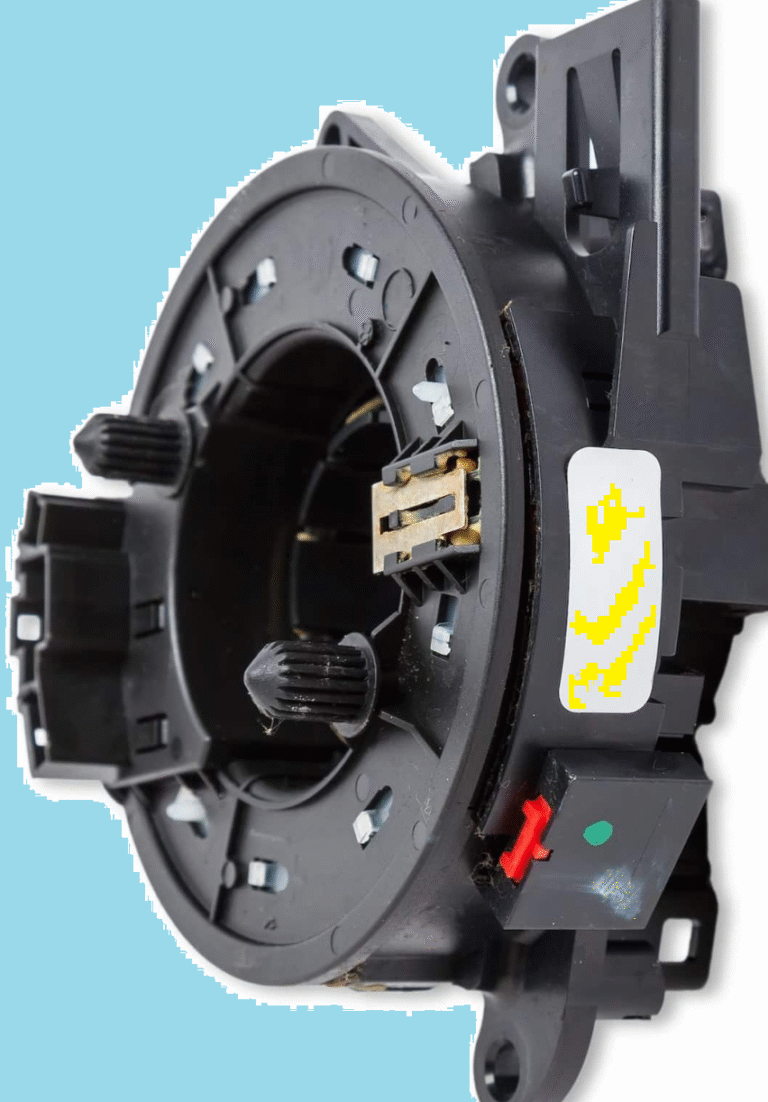You’re cruising down the road, and when you go to make a turn, your steering wheel feels like it’s fighting you—tight, stiff, and harder to move than usual. Sound familiar? I’ve been there, and it’s not just frustrating; it can make you worry about your car’s safety.
I’ve owned a few cars over the years, from a beat-up old pickup to a sleek sedan, and I’ve dealt with tight steering more than once. Each time, I dove under the hood or crawled under the car to figure out what was going on.

Photo by wuling
I’m going to walk you through the reasons why your steering wheel might feel tight when you turn, based on my own experiences and lessons learned. If you’re dodging city traffic or taking a long highway drive, let’s get to the bottom of this and help you get your steering smooth again.
What Does Tight Steering Mean?
When your steering wheel feels tight, it means you’re putting in more effort than usual to turn it. It might feel stiff, resistant, or even jerky, especially at low speeds or in tight spots like parking lots. I first noticed this in my old truck while trying to parallel park—it felt like I was wrestling with the wheel!
Tight steering isn’t just annoying; it can be a sign of a problem in your car’s steering or suspension system. Ignoring it could lead to bigger issues or even make driving unsafe. Let’s break down the most common causes so you can figure out what’s happening with your car.
Low Power Steering Fluid
If your car has hydraulic power steering, the fluid is what makes turning the wheel easy. When it’s low, the steering can feel tight or heavy. I ran into this with my SUV a few years back. The steering got stiff, and I heard a faint whining noise when I turned.
I popped the hood and checked the power steering reservoir—it was almost empty! Topping it up with the right fluid made a big difference, but I also found a small leak that needed fixing.
Low fluid usually means a leak somewhere, like in the hoses or seals. Check under your car for red or brownish puddles. To check the fluid, find the power steering reservoir under the hood—it’s usually a small plastic container with a cap labeled “power steering.”
Look at the dipstick or side markings to see if the level is low. If it is, add the fluid recommended in your car’s manual. Don’t mix different types of fluid—it can cause problems. If you keep needing to top it up, get the leak fixed by a mechanic.
Failing Power Steering Pump
The power steering pump pushes fluid through the system to help you turn the wheel. If it’s failing, the steering can feel tight, and you might hear a whining or groaning noise. This happened to me with my old coupe. The steering was stiff at low speeds, and the noise was loudest when I turned sharply. The pump’s bearings were worn out, and it wasn’t pushing fluid properly.
Pumps wear out over time, especially in older cars. Dirt or debris in the fluid can also clog them up. If you hear a whine that gets louder when you turn, or if the steering feels heavy, have a mechanic check the pump’s pressure.
Replacing a pump costs $200-$500, depending on your car, but it’s worth it to restore smooth steering. Flushing the power steering fluid every 50,000 miles can help prevent pump issues.
Worn or Damaged Steering Rack
The steering rack connects your steering wheel to the front wheels, turning your input into movement. If it’s worn or damaged, the steering can feel tight or unresponsive. I had this issue with a used car I bought a while ago. The wheel felt stiff, and there was a slight grinding sound when I turned. The rack’s gears were worn, and it needed replacing.
Steering racks wear out from constant use, especially if you drive on rough roads or hit potholes often. Leaks in the rack’s seals can let fluid out and dirt in, making things worse. If you feel resistance or hear noises when turning, have a mechanic inspect the rack.
Replacing it is a big job, costing $500-$1,500, but it’s critical for safe steering. Regular maintenance, like keeping fluid levels up, can help prolong the rack’s life.
Serpentine Belt or Tensioner Issues
The serpentine belt powers the power steering pump in many cars. If it’s loose, worn, or slipping, the pump won’t work properly, and the steering will feel tight. I noticed this in my sedan one summer—it squealed when I turned, and the wheel felt heavy. The belt was frayed, and the tensioner wasn’t keeping it tight.
Check the belt for cracks, fraying, or a shiny look. A loose tensioner can also cause problems. If you hear squealing or feel tight steering, inspect the belt and tensioner. Replacing a belt is usually cheap—$50-$150—and a tensioner might cost a bit more. Check the belt regularly, especially if it’s been a few years since it was replaced.
Low Tire Pressure or Misaligned Wheels
Your tires play a big role in how your steering feels. Low tire pressure makes it harder for the wheels to turn, causing tight steering. Misaligned wheels can also make the car pull to one side, adding resistance. I made this mistake with my minivan once.
The steering felt heavy, and I realized the tires were way underinflated. Pumping them up fixed it in minutes.
Check your tire pressure with a gauge and match it to the number on the sticker inside your driver’s door or in your car’s manual. For alignment, look for signs like uneven tire wear or the car drifting to one side.
A professional alignment costs $60-$100 and can make a big difference. Check tire pressure monthly and get an alignment yearly or after hitting a big pothole.
Worn Tie Rods or Ball Joints
Tie rods and ball joints connect the steering rack to the wheels, letting them pivot when you turn. If they’re worn or dry, the steering can feel tight, and you might hear clunking or squeaking. I had a bad tie rod on my old hatchback, and the steering felt stiff with a faint clunk every turn. The joint’s grease had dried out, causing extra friction.
These parts wear out over time, especially on rough roads. Check for loose steering or uneven tire wear. If you suspect a problem, have a mechanic inspect the tie rods and ball joints. Replacing them costs $100-$400 per part, but it’s essential for safe steering. Regular inspections during oil changes can catch issues early.
Cold Weather Effects
Cold weather can make your steering feel tight, especially when you first start the car. The power steering fluid can thicken in low temperatures, making the pump work harder. I noticed this in my pickup during a freezing winter—the wheel was stiff for the first few minutes of driving but loosened up as the car warmed up.
Using the right power steering fluid for your climate helps. Some fluids are designed for cold weather. Let your car warm up for a minute or two before driving in the winter. If the tightness persists after the car warms up, it’s likely another issue on this list.
Electric Power Steering Issues
Some newer cars have electric power steering (EPS) instead of hydraulic. EPS uses a motor to assist turning, and if it malfunctions, the steering can feel tight. I had a friend with an EPS-equipped car who dealt with this—the wheel felt heavy, and a warning light came on. A mechanic found a fault in the EPS module.
EPS issues are less common but can happen due to electrical faults, worn motors, or software glitches. If you have EPS and the steering feels tight, check for warning lights on the dashboard. A mechanic can run a diagnostic to find the problem. Repairs can be pricey—$500-$2,000—but they’re rare with proper care.
Comparing Causes of Tight Steering
Here’s a table to help you identify what’s making your steering wheel feel tight:
| Cause | Symptoms | Fix |
|---|---|---|
| Low Power Steering Fluid | Tight steering, whining noise | Top up fluid, check for leaks |
| Failing Power Steering Pump | Heavy steering, groaning noise | Replace pump, flush fluid |
| Worn Steering Rack | Stiff steering, grinding noise | Repair or replace rack |
| Serpentine Belt/Tensioner | Tight steering, squealing noise | Replace belt or tensioner |
| Low Tire Pressure/Alignment | Heavy steering, pulling to one side | Adjust tire pressure, align wheels |
| Worn Tie Rods/Ball Joints | Tight steering, clunking noise | Replace joints, check lubrication |
| Cold Weather | Temporary tightness in cold conditions | Use proper fluid, warm up car |
| Electric Power Steering | Tight steering, warning light | Diagnose and repair EPS system |
How to Diagnose Tight Steering
Figuring out why your steering feels tight can feel like a mystery, but you can narrow it down with some simple checks. Here’s what I do when I notice the problem:
- Check the power steering fluid. Look at the reservoir under the hood. If it’s low or dirty, top it up or flush it.
- Listen for noises. Whining, groaning, or clunking can point to the pump, rack, or joints.
- Inspect tires. Check pressure and look for uneven wear. Low pressure or misalignment can cause tightness.
- Feel the steering. Is it tight at low speeds, high speeds, or both? This helps pinpoint the issue.
- Test in different conditions. Note if the tightness happens only in cold weather or after warming up.
- Look for warning lights. In EPS-equipped cars, a dashboard light might indicate an electrical issue.
If you’re stumped, take your car to a mechanic. They can lift it and check the steering and suspension components for wear or damage.
When to See a Professional
Some fixes, like topping up fluid or inflating tires, are easy DIY tasks. But problems with the steering rack, pump, or EPS system need a pro’s touch. I tried replacing a tie rod myself once, and it was a nightmare without the right tools.
A mechanic has the equipment to diagnose and fix complex issues safely. If you hear noises, see leaks, or feel strong resistance, don’t wait—get it checked. Steering problems can affect your control of the car, so safety comes first.
Advice for Smooth Steering
To keep your steering wheel turning smoothly, here’s what I’ve found works:
- Check power steering fluid monthly. Look at the level and color. Top it up if needed, and flush it every 50,000 miles.
- Keep tires in check. Check pressure monthly and get an alignment yearly or after hitting a pothole.
- Listen to your car. Noises or changes in steering feel are early warnings. Don’t ignore them.
- Drive gently. Avoid potholes and rough roads to reduce wear on steering and suspension parts.
- Schedule regular maintenance. Have a mechanic inspect your steering system during oil changes or tire rotations.
These habits can catch issues early and save you from expensive repairs.
Conclusion
A tight steering wheel can turn a relaxing drive into a stressful workout, but now you know what might be causing it. I’ve wrestled with stiff steering in my own cars, and I know how unsettling it can be. Whether it’s low fluid, a worn rack, or something as simple as tire pressure, most issues are fixable with the right approach.
By checking fluids, listening for noises, and staying on top of maintenance, you can keep your steering smooth and your drives enjoyable. If the problem feels too big, don’t hesitate to call a mechanic—your safety is worth it.
There’s nothing like the feeling of a car that handles like a dream, turning effortlessly as you navigate the road. With a little care, you can keep your steering wheel light and responsive, whether you’re weaving through city streets or cruising down the highway.
Read more on steering wheel
FAQs
Why does my steering wheel feel tight only in cold weather?
Cold weather can thicken power steering fluid, making steering feel tight. Let your car warm up for a minute or two. Use fluid designed for cold climates if it’s a recurring issue.
Can low tire pressure make steering feel tight?
Yes, low tire pressure increases resistance, making steering harder. Check your tire pressure with a gauge and inflate to the level in your car’s manual.
What noises mean my steering system has a problem?
Whining or groaning often points to the power steering pump or low fluid. Clunking or grinding can mean worn tie rods, ball joints, or a steering rack issue.
Is it safe to drive with tight steering?
Mild tightness might be okay for a short drive to a mechanic, but severe resistance or noises mean you should stop driving and get it checked immediately.
How often should I check my power steering fluid?
I check mine every couple of months or during oil changes. Top it up if it’s low, and watch for leaks.
Can a bad serpentine belt cause tight steering?
Yes, a loose or worn belt can reduce power to the steering pump, making the wheel feel tight. Check for squealing or visible wear on the belt.
What should I do if my electric power steering feels tight?
Check for dashboard warning lights and take the car to a mechanic. They can run a diagnostic to find faults in the EPS system.




